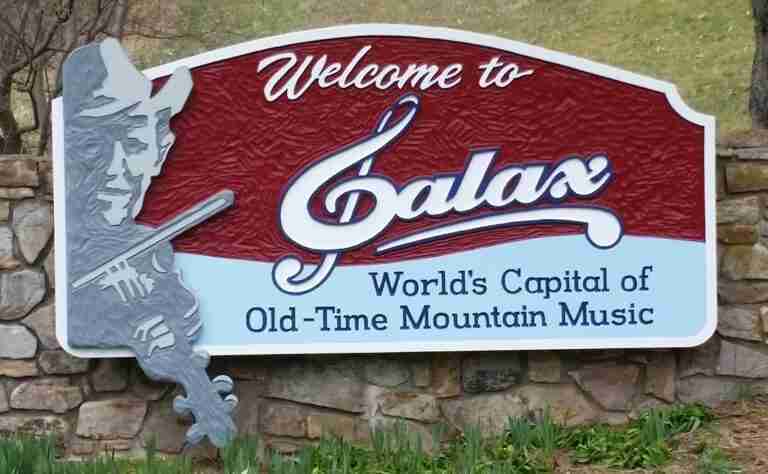Stompin’ 76: The Woodstock of Bluegrass

Stompin’ 76 was a landmark festival that, for one long weekend in 1976, made Bluegrass the center of the musical universe. Like New York’s iconic Woodstock festival in 1969, the event is legendary.
Over 100,000 attended the event. Most attendees parked miles away—some on Interstate 77, more than eleven miles away—and walked up country roads to the festival near Galax, VA. Carroll County, VA, roads were clogged, and residents weren’t happy about it. But fans were determined to get there.
Upon arrival, patrons found a Bluegrass festival held in a cow pasture set up with a makeshift stage and porta-potties, temporarily dubbed the New River Jam Site. Tents and vans cluttered the hillside. Alcohol and other substances flowed freely. Some attendees enjoyed swimming in the creek. Of course, it rained. What’s an outdoor festival without rain and mud?
An All-Star Lineup
In the 1970s, Bluegrass was enjoying a revival. Festivals popped up nationwide, but Stompin’ 76 wasn’t just another weekend of music. Tickets cost $12 to $15 for the three-day event near Galax, Virginia.
It had a lineup like no other Bluegrass festival. Appearing on stage were Bonnie Raitt, Earl Scruggs, Lester Flatt & Nashville Grass, Vassar Clements, Ry Cooder, John Hartford, Osborne Brothers, The Rowans, John Prine, Nitty Gritty Dirt Band, Doc & Merle Watson, The Dillards, Papa John Creach, David Bromberg, and other notables. Exciting new acts like the New Grass Revival brought progressive energy. The result was a thrilling showcase of Bluegrass in all its forms, from time-honored traditions to exciting innovations.
The music was captivating: Bonnie Raitt doing a soulful version of Love Me Like a Man; the Dillards performing a gospel song, their acapella voices drifting a half-mile through the Virginia countryside. But Stompin’ 76 was about more than just the performances. It was a full-on Bluegrass immersion. The crowd, comprised of diehard fans and curious newcomers alike, generated infectious energy. Workshops and impromptu jam sessions blurred the lines between audience and artists. In this atmosphere, Bluegrass became a way of life, not just a style of music.
A Model for Bluegrass Festivals
The festival’s impact was undeniable. Stompin’ 76 brought Bluegrass to a vast new audience, exposing countless young people to the genre’s power and beauty. It set a standard for Bluegrass festivals to come, inspiring the creation of events that continue to celebrate the music. Most importantly, it fueled a generational surge of enthusiasm that carried Bluegrass forward.
Some may argue that comparing Stompin’ 76 to Woodstock exaggerates its significance. Yet, the core similarities remain: both festivals were defining cultural moments, fueled by youthful energy and an unyielding love of music. Stompin’ 76 was a reflection of its time, a testament to the enduring spirit of Bluegrass.
Today, the echo of Stompin’ 76 can be heard in the vibrant Bluegrass festivals flourishing worldwide. It certainly gave a shot in the-arm to the Galax Old Fiddler’s Convention. That transformative weekend in Virginia proved the staying power of Bluegrass. And when thousands gather in its name, the spirit of celebration, community, and pure musical joy shines as bright as it did back in 1976.


Comments are closed.